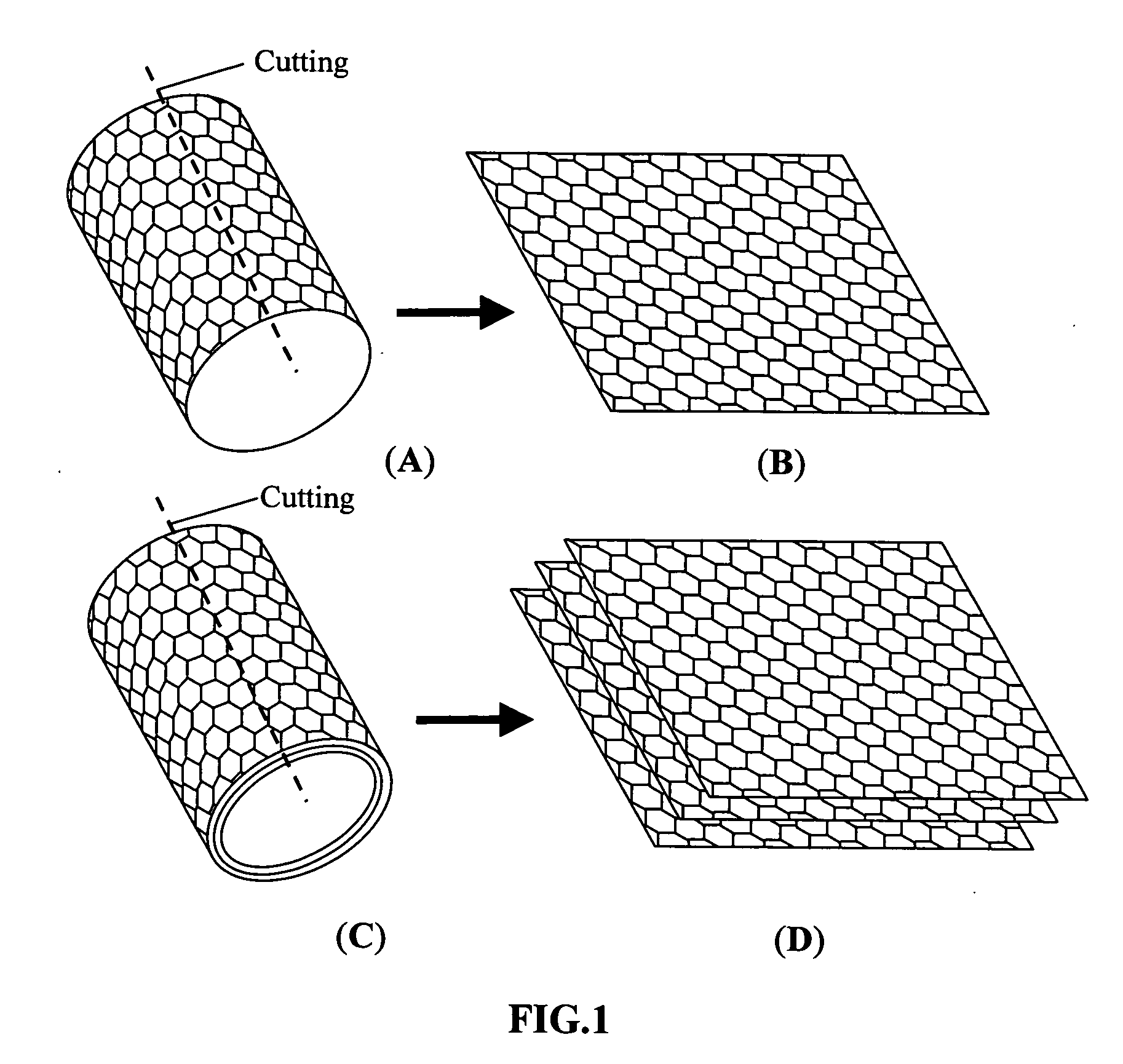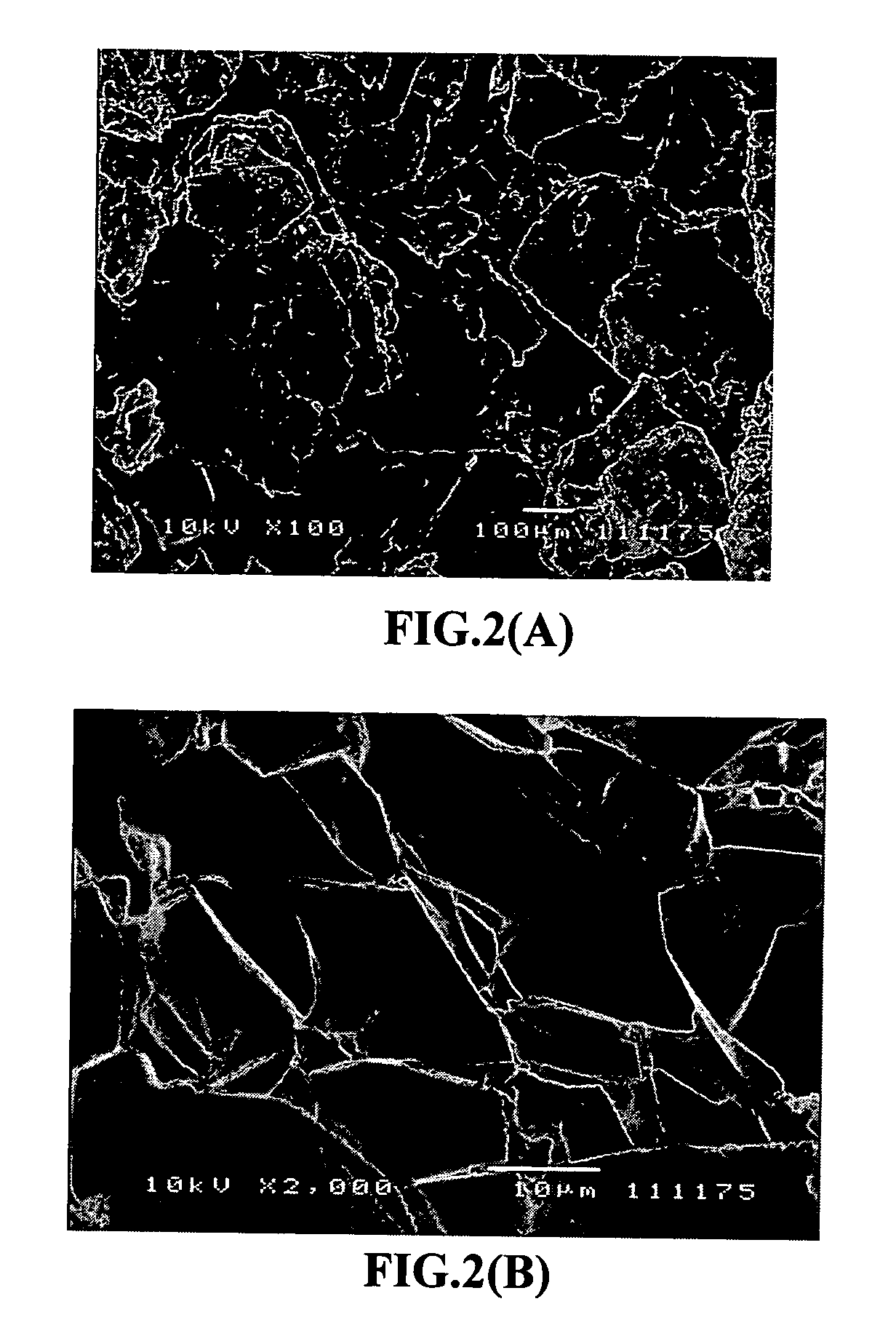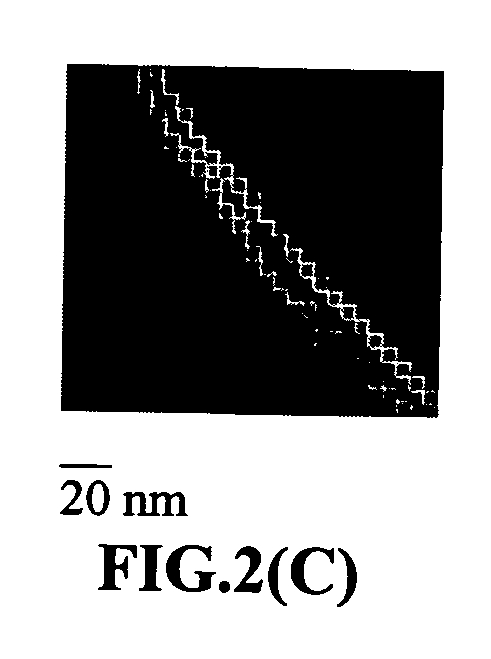Process for producing nano-scaled graphene plates
a graphene plate and nano-scale technology, applied in the direction of graphene, material nanotechnology, chemistry apparatus and processes, etc., can solve the problems of increasing cost, complicated purification process, and only about 15% yield of pure cnts with respect to the end product, so as to achieve faster and cost-effective process, reduce laborious carbonization procedures, and reduce the effect of labor
- Summary
- Abstract
- Description
- Claims
- Application Information
AI Technical Summary
Benefits of technology
Problems solved by technology
Method used
Image
Examples
example 1
[0036] One hundred grams of natural graphite flakes ground to approximately 0.2 mm or less in sizes, were treated in a mixture of sulfuric and nitric acids at concentrations to yield the desired intercalation compound. The product was water washed and dried to approximately 1% by weight water. The dried particles were introduced into a furnace at 1,250° C. to effect extremely rapid and high expansions of graphite crystallites. The exfoliated graphite particles were then ball-milled in a high-energy plenary ball mill machine for 24 hours to produce nano-scaled particles.
example 2
[0037] Same as in Example 1, but the starting material was a carbon fiber chopped into segments with 0.2 mm or smaller in length prior to the acid solution treatment.
example 3
[0038] A powder sample of carbon whiskers or graphitic nano-fibers was prepared by introducing an ethylene gas through a quartz tube pre-set at a temperature of approximately 800° C. A small amount of Cu—Ni powder was positioned on a crucible to serve as a catalyst, which promote the decomposition of the hydrocarbon gas and growth of carbon whiskers. Approximately 2.5 grams of the carbon whiskers were intercalated with 2.5 grams of intercalant consisting of 86 parts by weight of 93% sulfuric acid and 14 parts by weight of 67% nitric acid. The particles were then placed in a 90° C. oven for 20 minutes. The intercalated particles were then washed with water. After each washing the particles were filtered by vacuum through a Teflon screen. After the final wash the particles were dried for 1 hour in a 115° C. oven. The dried particles were then rapidly heated to approximately 1,000° C. to further promote expansion. Samples containing exfoliated graphite crystallites were then ball-mille...
PUM
| Property | Measurement | Unit |
|---|---|---|
| thickness | aaaaa | aaaaa |
| diameters | aaaaa | aaaaa |
| temperature | aaaaa | aaaaa |
Abstract
Description
Claims
Application Information
 Login to View More
Login to View More - R&D
- Intellectual Property
- Life Sciences
- Materials
- Tech Scout
- Unparalleled Data Quality
- Higher Quality Content
- 60% Fewer Hallucinations
Browse by: Latest US Patents, China's latest patents, Technical Efficacy Thesaurus, Application Domain, Technology Topic, Popular Technical Reports.
© 2025 PatSnap. All rights reserved.Legal|Privacy policy|Modern Slavery Act Transparency Statement|Sitemap|About US| Contact US: help@patsnap.com



